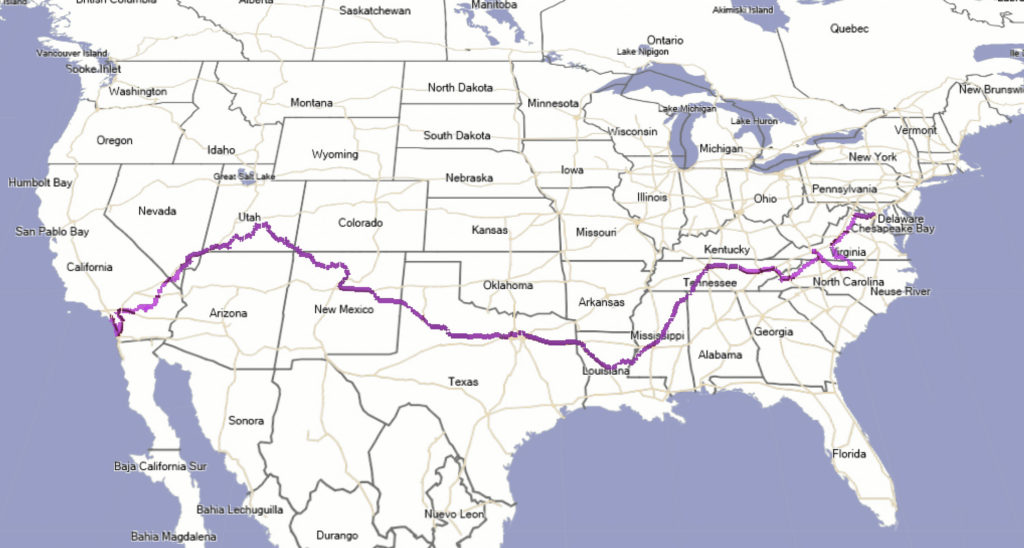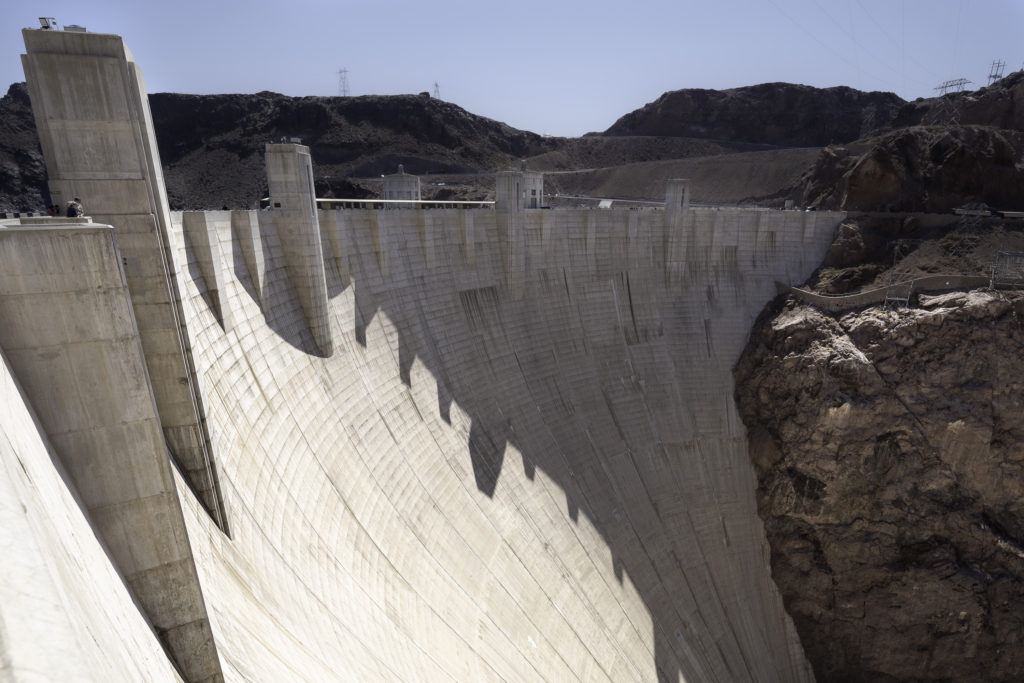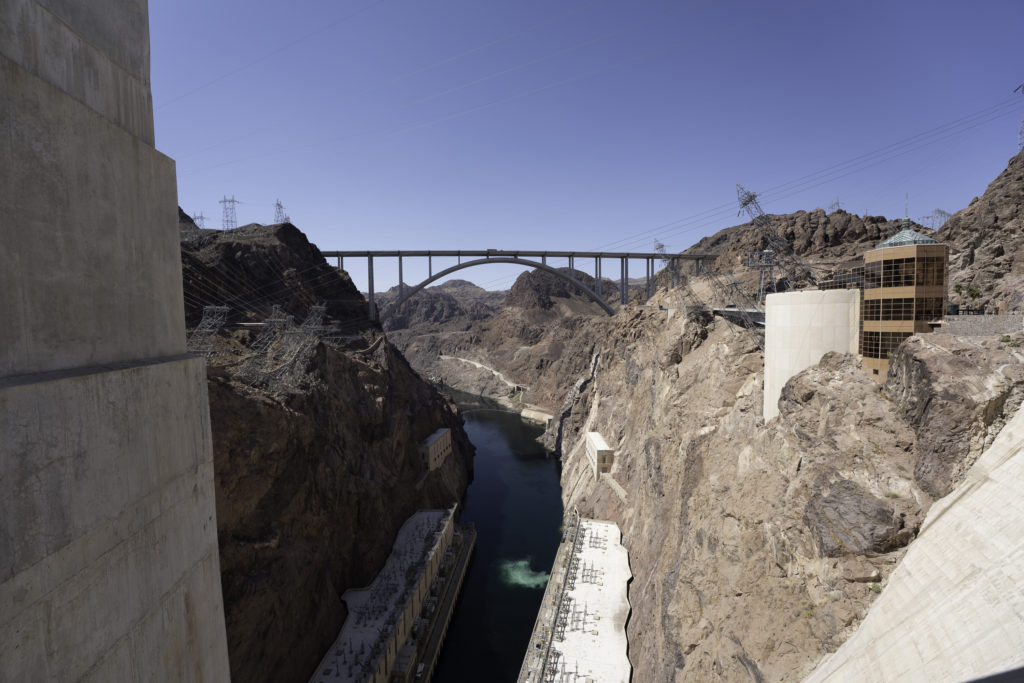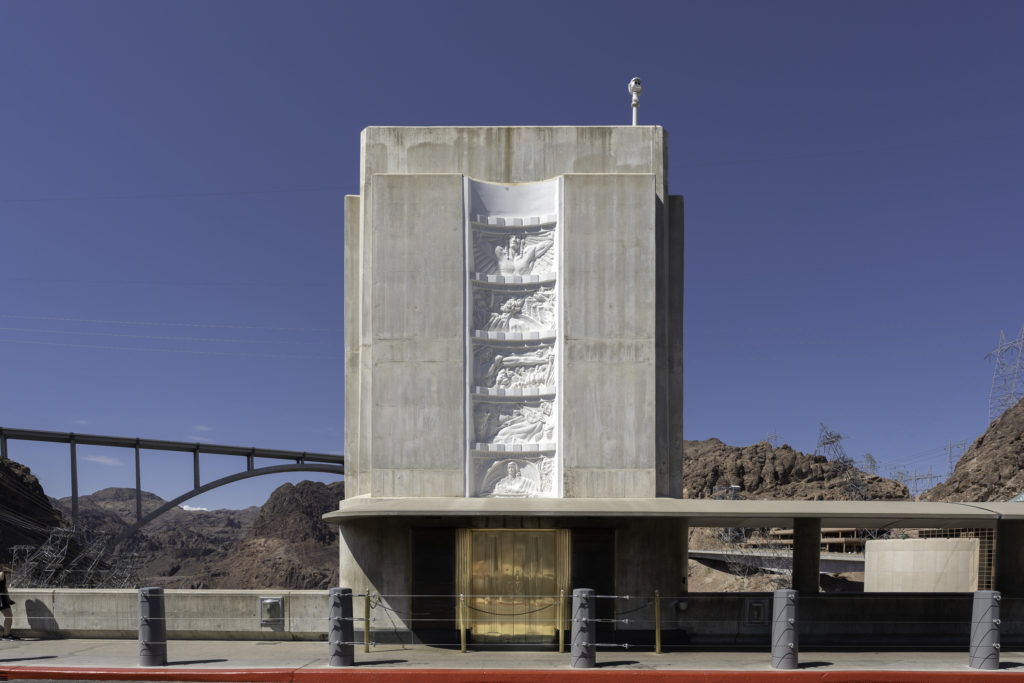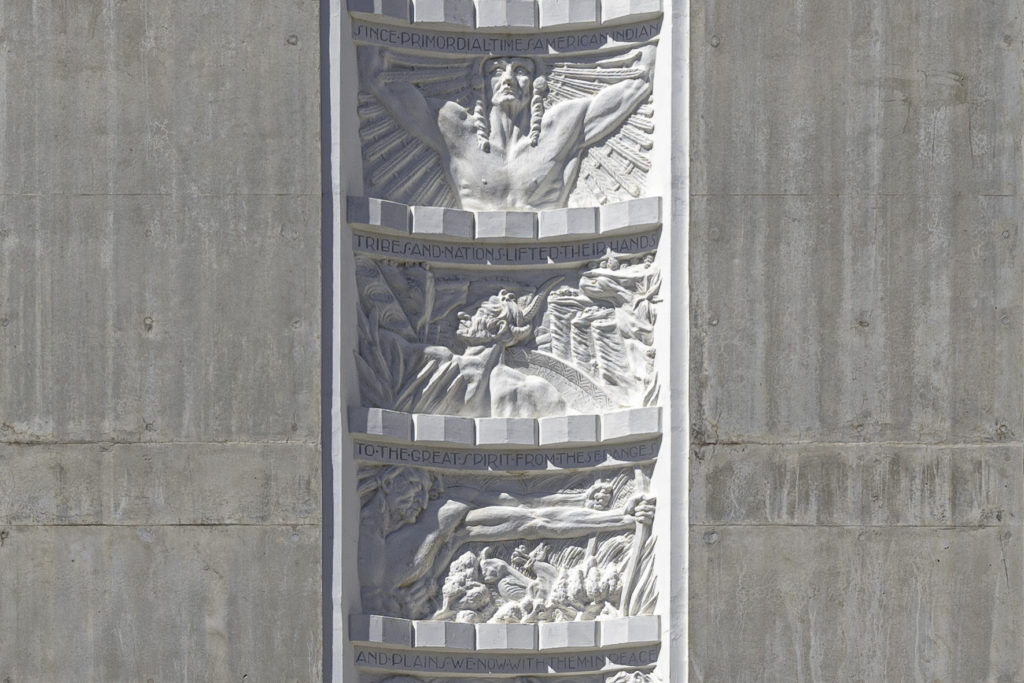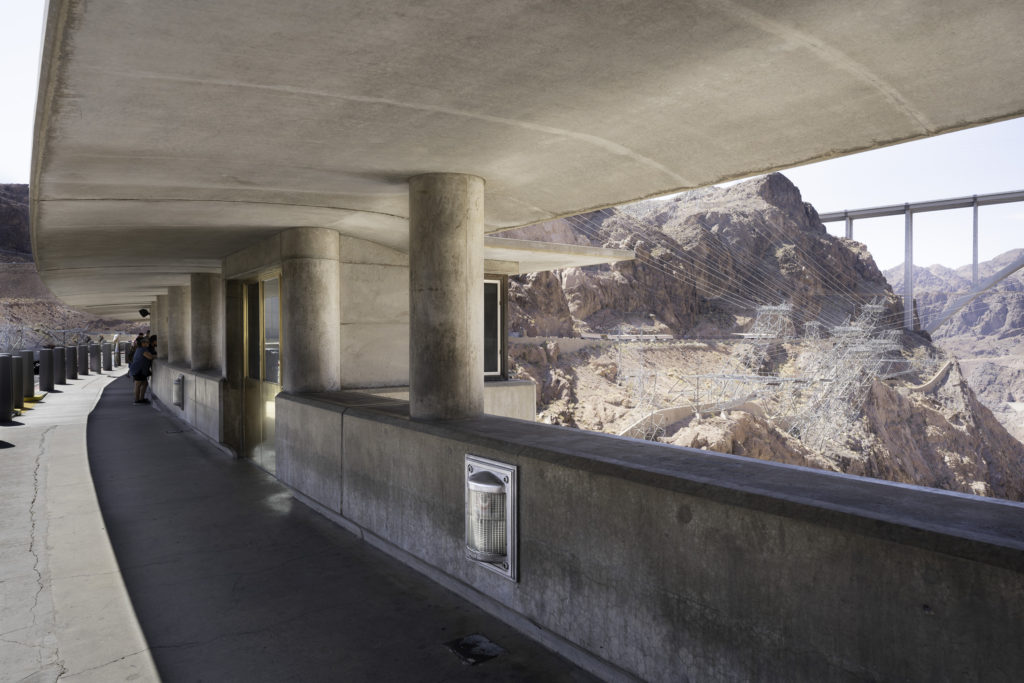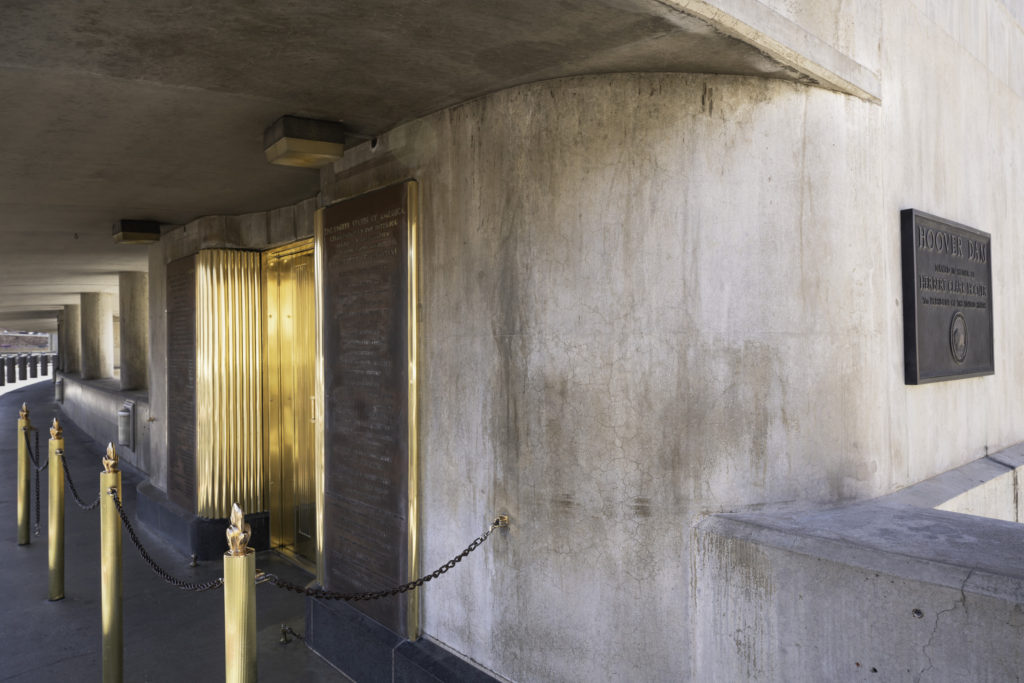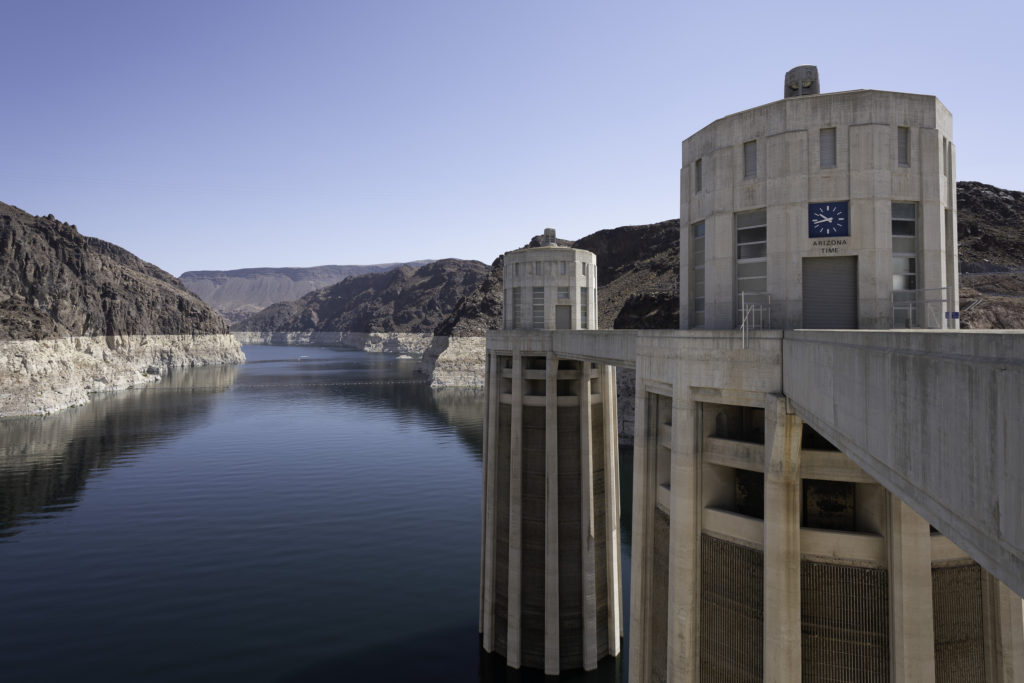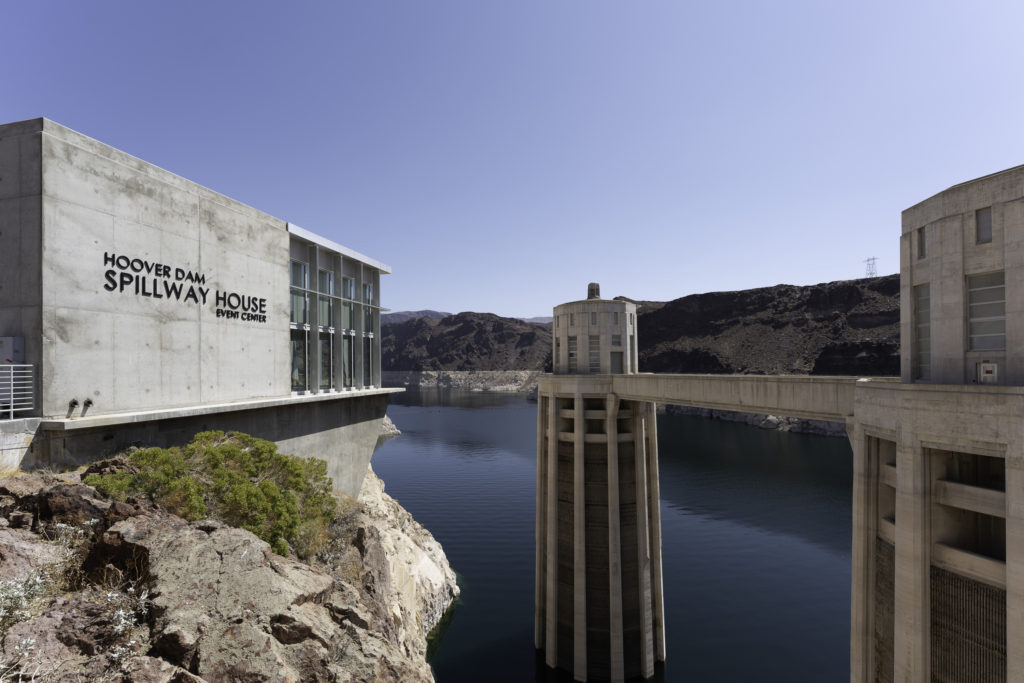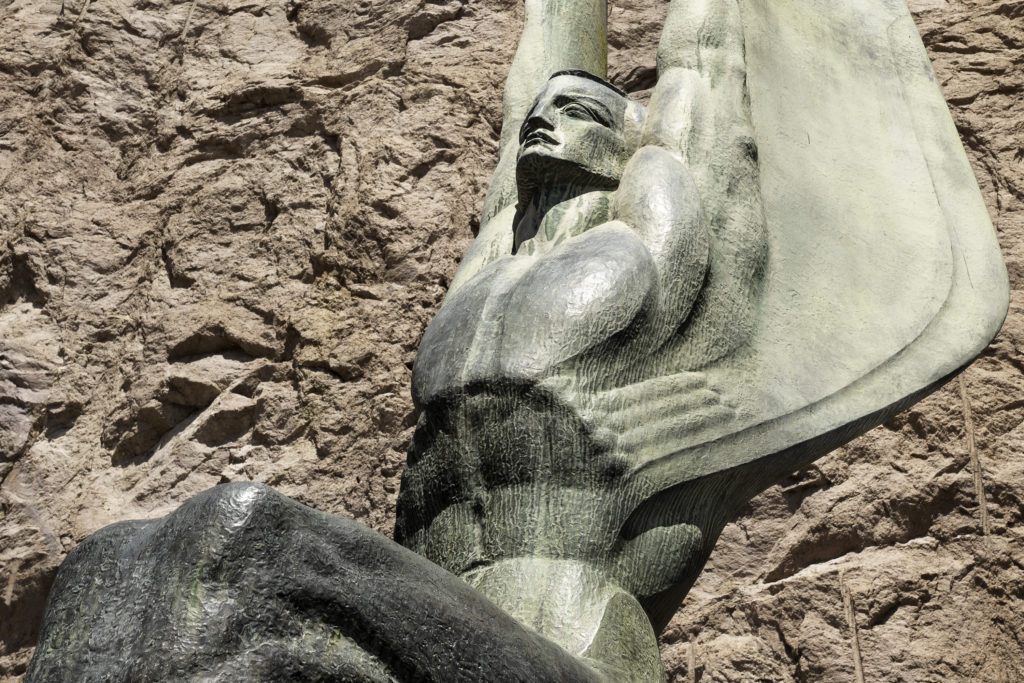Cross-Country – At Hoover Dam
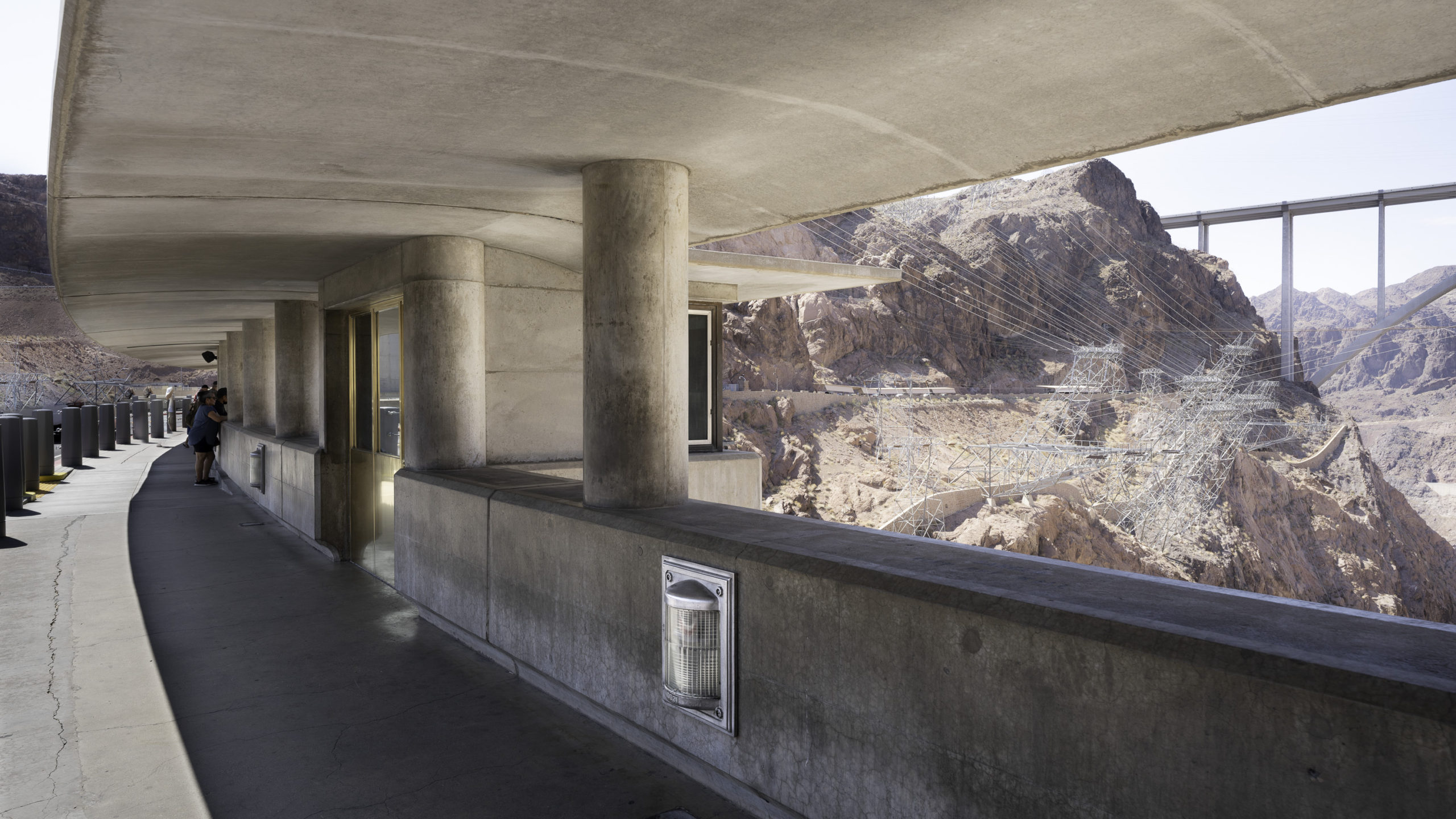
I rode across the country this past spring on a motorcycle that I had bought during the winter from a guy in Orange County, California, just south of Los Angeles. We did the transaction online, and he kept the bike garaged until I flew out in April to pick it up after getting my COVID vaccinations. The planning for all of this helped generate a bit of adventure during the quiet time-out that COVID had imposed. The second night of the trip I stayed in Boulder City, Nevada, a few miles from Hoover Dam. The next morning I visited the dam and spent some time admiring it before continuing my ride.
Hoover Dam, remote and massive for its time, was considered a remarkable engineering accomplishment when it was completed in 1936. Over seven hundred feet high, it plugged the Colorado River at Black Canyon, a narrow gorge on the border between Nevada and Arizona. The damming of the Colorado created Lake Mead, a 100-plus mile long reservoir with a capacity of about nine trillion gallons when it’s full, at a height of about 1,220 feet above sea level. The dam tamed the damaging seasonal floods of the river, provided water and electricity for growing populations in the Southwest, and irrigated distant farmlands via complex channel systems. It’s not a stretch to say that Hoover Dam made the Southwest as we know it today possible. Today, though, with long-term drought and unsustainable water use, the reservoir is at only about 35% of its capacity, and its current height of 1,067 feet is not far above the minimum level for power generation at the dam.
Although engineering facts and environmental issues gave me a lot to consider as I was walking across the top of Hoover Dam, I was drawn to the design of its features. These features were executed with a fine sense of the Modernist and Art Deco design aesthetics that characterized LA architecture at the time. Four unadorned turrets rise up cleanly from the steeply sloping face of the dam. Projecting niches between the towers give spots to step away from the face and look down the scary distance to the generating plants far below. Brightly polished brass doors and other little details stand out against the smooth surfaces and curves of nicely-formed concrete. A wide canopy stretches in an arc between the two middle turrets, providing shade and a sense of safe enclosure for looking down the canyon from such a spectacular height. The intake towers close by on the Lake Mead side of the rim stand on cylinders of vertical concrete ribs topped with small polygonal structures done in the restrained style of the time, with lights that make the towers glow at night. It’s all a fitting aesthetic for a monument to the engineering and ingenuity and political will of the time.
